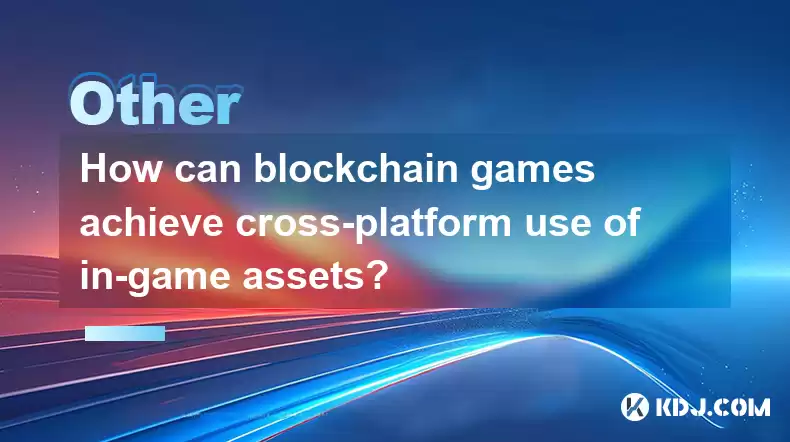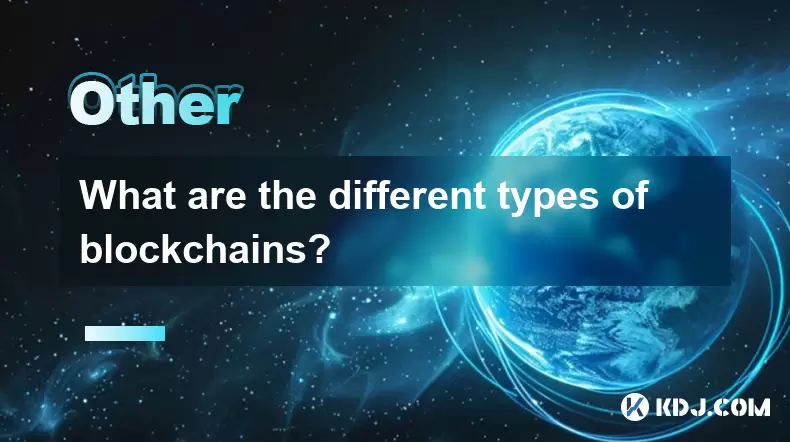-
 Bitcoin
Bitcoin $112400
-1.07% -
 Ethereum
Ethereum $3409
-3.27% -
 XRP
XRP $2.784
-6.60% -
 Tether USDt
Tether USDt $0.9997
-0.03% -
 BNB
BNB $739.3
-2.09% -
 Solana
Solana $158.0
-2.90% -
 USDC
USDC $0.9998
-0.02% -
 TRON
TRON $0.3213
-0.94% -
 Dogecoin
Dogecoin $0.1929
-5.01% -
 Cardano
Cardano $0.6974
-2.82% -
 Hyperliquid
Hyperliquid $36.69
-2.31% -
 Sui
Sui $3.327
-4.80% -
 Stellar
Stellar $0.3672
-5.18% -
 Chainlink
Chainlink $15.65
-3.07% -
 Bitcoin Cash
Bitcoin Cash $525.0
-1.68% -
 Hedera
Hedera $0.2291
-6.00% -
 Avalanche
Avalanche $20.91
-2.96% -
 Ethena USDe
Ethena USDe $1.000
0.00% -
 Toncoin
Toncoin $3.520
-1.12% -
 UNUS SED LEO
UNUS SED LEO $8.968
0.14% -
 Litecoin
Litecoin $105.7
0.26% -
 Shiba Inu
Shiba Inu $0.00001181
-1.79% -
 Polkadot
Polkadot $3.492
-2.08% -
 Uniswap
Uniswap $8.800
-3.10% -
 Dai
Dai $0.9999
-0.01% -
 Monero
Monero $289.9
-3.17% -
 Bitget Token
Bitget Token $4.243
-1.27% -
 Pepe
Pepe $0.00001006
-3.67% -
 Cronos
Cronos $0.1248
-5.68% -
 Aave
Aave $249.7
-2.50%
How can blockchain games achieve cross-platform use of in-game assets?
Blockchain games achieve cross-platform asset use through standardization, interoperability, user-friendly interfaces, marketplace integration, and developer collaboration.
Apr 17, 2025 at 08:35 pm

Blockchain games have revolutionized the gaming industry by introducing the concept of true ownership of in-game assets through non-fungible tokens (NFTs). One of the most exciting aspects of these games is the ability to use in-game assets across different platforms seamlessly. Achieving cross-platform use of in-game assets in blockchain games involves several key elements, including standardization, interoperability, and user-friendly interfaces. Let's delve into how blockchain games can achieve this.
Standardization of Asset Representation
The first crucial step in achieving cross-platform use of in-game assets is the standardization of asset representation. This involves using common standards for NFTs, such as the ERC-721 and ERC-1155 standards on the Ethereum blockchain. These standards ensure that NFTs can be easily recognized and transferred between different games and platforms.
- Choose a standard: Developers should decide on a standard like ERC-721 or ERC-1155 for their NFTs.
- Implement the standard: Ensure that the smart contracts used to create and manage NFTs adhere to the chosen standard.
- Test interoperability: Before launching, test the NFTs to ensure they can be transferred and used across different platforms that support the same standard.
By adhering to these standards, developers can ensure that the in-game assets are universally recognizable and transferable, laying the groundwork for cross-platform use.
Interoperability Between Different Blockchains
Another essential aspect of achieving cross-platform use is interoperability between different blockchains. Not all blockchain games operate on the same blockchain, so mechanisms need to be in place to allow assets to move between different networks.
- Use of cross-chain bridges: These are protocols that allow assets to be transferred from one blockchain to another. Examples include the Polygon Bridge for transferring assets between Ethereum and Polygon.
- Atomic swaps: This method enables the exchange of assets between different blockchains without the need for a trusted intermediary.
- Sidechains and layer-2 solutions: These can be used to enhance the scalability and speed of asset transfers, making cross-platform use more efficient.
By implementing these solutions, developers can ensure that in-game assets can be used across games on different blockchains, enhancing the overall gaming experience.
User-Friendly Interfaces and Wallets
To facilitate the cross-platform use of in-game assets, user-friendly interfaces and wallets are crucial. Players should be able to manage their NFTs easily, regardless of the platform they are using.
- Integrated wallets: Games should integrate with popular wallets like MetaMask or Trust Wallet, allowing players to manage their NFTs directly within the game.
- Clear instructions: Provide clear and concise instructions on how to transfer and use NFTs across different platforms.
- Support for multiple blockchains: Ensure that the wallet supports multiple blockchains to enhance the flexibility of asset use.
By making the process of managing and using NFTs as seamless as possible, developers can encourage more players to engage in cross-platform gaming.
Marketplace Integration
A robust marketplace integration is another key factor in achieving cross-platform use of in-game assets. Players should be able to buy, sell, and trade their NFTs across different marketplaces seamlessly.
- OpenSea and Rarible integration: These are popular NFT marketplaces that support a wide range of blockchains and standards, making them ideal for cross-platform use.
- In-game marketplaces: Some games have their own marketplaces where players can trade assets. Ensuring these are interoperable with external marketplaces can enhance the utility of in-game assets.
- API support: Use APIs to connect in-game marketplaces with external ones, allowing for seamless trading experiences.
By integrating with established marketplaces, developers can provide players with a wide array of options for trading their in-game assets, further enhancing cross-platform use.
Community and Developer Collaboration
Community and developer collaboration plays a significant role in achieving cross-platform use of in-game assets. Developers need to work together to ensure that their games and platforms are compatible with each other.
- Open-source initiatives: Encourage the use of open-source code and standards to foster collaboration and interoperability.
- Developer forums and conferences: These provide a platform for developers to share ideas and solutions for cross-platform use.
- Community feedback: Engage with the gaming community to understand their needs and preferences for cross-platform asset use.
By fostering a collaborative environment, developers can create a more interconnected ecosystem where in-game assets can be used seamlessly across different platforms.
Frequently Asked Questions
Q: Can in-game assets be used in games that are not on the blockchain?
A: No, in-game assets represented as NFTs can only be used in games that support blockchain technology and the specific standards of the NFTs. Traditional games without blockchain integration cannot use these assets.
Q: Are there any fees associated with transferring in-game assets across different platforms?
A: Yes, transferring NFTs across different platforms often involves transaction fees, which can vary depending on the blockchain and the specific transfer mechanism used. These fees are typically paid in the native cryptocurrency of the blockchain.
Q: How can players ensure the security of their in-game assets during cross-platform use?
A: Players should use reputable wallets with strong security features, such as hardware wallets like Ledger or software wallets like MetaMask with two-factor authentication. Additionally, they should be cautious of phishing attempts and only use official platforms for transferring their NFTs.
Q: Can the value of in-game assets change when used across different platforms?
A: Yes, the value of in-game assets can fluctuate based on demand and supply across different platforms. The value may also be influenced by the specific game's ecosystem and the utility of the asset within that game.
Disclaimer:info@kdj.com
The information provided is not trading advice. kdj.com does not assume any responsibility for any investments made based on the information provided in this article. Cryptocurrencies are highly volatile and it is highly recommended that you invest with caution after thorough research!
If you believe that the content used on this website infringes your copyright, please contact us immediately (info@kdj.com) and we will delete it promptly.
- Grayscale, Altcoin Trust, and Mid-Cap Mania: What's the Deal?
- 2025-08-03 08:50:16
- XRP, ADA, and the Altcoin Evolution: What's Hot and What's Next
- 2025-08-03 08:30:16
- HBAR Price Check: Will Monthly Gains Hold at This Resistance Level?
- 2025-08-03 08:30:16
- Bitcoin, Cryptos, and Retirees: A New Era of Investment?
- 2025-08-03 08:50:16
- BlockDAG's Presale Power & Active Miners: A New York Minute on Crypto's Hottest Trend
- 2025-08-03 08:55:25
- BlockDAG Presale Heats Up: SUBBD Trails as Innovation Meets Execution
- 2025-08-03 09:00:16
Related knowledge

What is the difference between on-chain and off-chain transactions?
Aug 02,2025 at 04:22pm
Understanding On-Chain TransactionsOn-chain transactions refer to digital asset transfers that are recorded directly on a blockchain ledger. These tra...

What is the double-spending problem and how does blockchain prevent it?
Aug 02,2025 at 01:07pm
Understanding the Double-Spending ProblemThe double-spending problem is a fundamental challenge in digital currency systems where the same digital tok...

What is the difference between a blockchain and a database?
Aug 01,2025 at 09:36pm
Understanding the Core Structure of a BlockchainA blockchain is a decentralized digital ledger that records data in a series of immutable blocks linke...

How does blockchain handle scalability?
Aug 02,2025 at 02:58pm
Understanding Blockchain Scalability ChallengesBlockchain scalability refers to a network's ability to handle an increasing volume of transactions wit...

What are the different types of blockchains?
Aug 03,2025 at 03:01am
Public Blockchains: Open and Decentralized NetworksPublic blockchains are the most widely recognized type of blockchain, characterized by their open a...

What is a hash in a blockchain?
Aug 02,2025 at 05:28am
Understanding the Concept of Hash in BlockchainA hash in the context of blockchain technology refers to a unique digital fingerprint generated by a cr...

What is the difference between on-chain and off-chain transactions?
Aug 02,2025 at 04:22pm
Understanding On-Chain TransactionsOn-chain transactions refer to digital asset transfers that are recorded directly on a blockchain ledger. These tra...

What is the double-spending problem and how does blockchain prevent it?
Aug 02,2025 at 01:07pm
Understanding the Double-Spending ProblemThe double-spending problem is a fundamental challenge in digital currency systems where the same digital tok...

What is the difference between a blockchain and a database?
Aug 01,2025 at 09:36pm
Understanding the Core Structure of a BlockchainA blockchain is a decentralized digital ledger that records data in a series of immutable blocks linke...

How does blockchain handle scalability?
Aug 02,2025 at 02:58pm
Understanding Blockchain Scalability ChallengesBlockchain scalability refers to a network's ability to handle an increasing volume of transactions wit...

What are the different types of blockchains?
Aug 03,2025 at 03:01am
Public Blockchains: Open and Decentralized NetworksPublic blockchains are the most widely recognized type of blockchain, characterized by their open a...

What is a hash in a blockchain?
Aug 02,2025 at 05:28am
Understanding the Concept of Hash in BlockchainA hash in the context of blockchain technology refers to a unique digital fingerprint generated by a cr...
See all articles

























































































